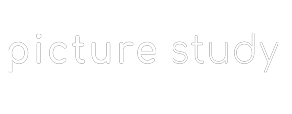THE TEACHING AND LEARNING CHANGE PROGRAMME
In 2003, I started working for a company that had been commissioned to produce a series of educational multimedia resources for the Standards Unit. These resources would support teachers across England and Wales, as part of their Continuing Professional Development.
The project was called The Teaching and Learning Change Programme, designed to improve teaching and learning, in the learning and skills sector. This was Phase 1 of the programme. The resource I would be producing was, “Improving Teaching and Learning in Science”.
WORKING WITH THE TEACHERS
“You often assume they know what you taught them, or they’ve understood what you’ve told them which isn’t necessarily the case. There’s a process of us delivering lessons and presenting material and thinking, “I’ve done my bit”, but there hasn’t necessarily been any learning going on.” Chemistry Teacher
A key aspect of the resource was a series of videos featuring teachers, who were taking part in the project. Our main focus with the filming was to get the students talking in front of the camera. So through our pre-production visits, we would talk to teachers about what we were looking for and encourage them to devise activities that would get the students talking and sharing their thinking.
Subsequently, the teachers experimented with various approaches. They used demonstrations, practical activities, and questioning techniques to engage the learners in order to get them talking. The learners responded positively.
OBSERVATION
“One exam question comes up, you can do it but if another one comes up you couldn’t, so it’s like pot luck which exam question you get.” Student
And this would lead to capturing some very honest reflections from the teachers and the students. For example, this was taken from a case study of a chemistry teacher, who wanted to find out what his students could remember about endothermic and exothermic reactions, before moving onto enthalpy cycles.
And this would lead to capturing some very honest reflections from the teachers and the students. For example, this was taken from a case study of a chemistry teacher, who wanted to find out what his students could remember about endothermic and exothermic reactions, before moving onto enthalpy cycles.
By the end of the project, we had accumulated a great deal of footage. The Standards Unit were keen to bring this work together, and so commissioned us to produce a DVD, called “Looking at learning in science”. The DVD was structured around four sections, designed to help science teachers reflect on their own practice.
- Understanding abstract ideas – thinking about conceptual development and moving towards qualitative understanding
- The role of discussion – the value of giving students the opportunity to talk about abstract ideas
- Structuring discussion – the development of appropriate tasks to help manage the discussion process
- Learning from learners – what we can learn from listening to students discussing ideas, and ensure that all learners participate
The DVD also featured Professor Robin Millar, University of York, who we had also interviewed for the project. Here is the fourth section from the video, Learning from learners.
After this work, I moved on to other educational projects, including the next three phases of the Teaching and Learning Change Programme. But it was this initial science project that was the launching pad for me into the world of educational media. And from this experience, it started me thinking about ways in how to encourage students to share and articulate their thinking in front of the camera, because by listening to what learners say, I believe, helps move teaching and learning on.
This is why I enjoy doing what I’m doing.
